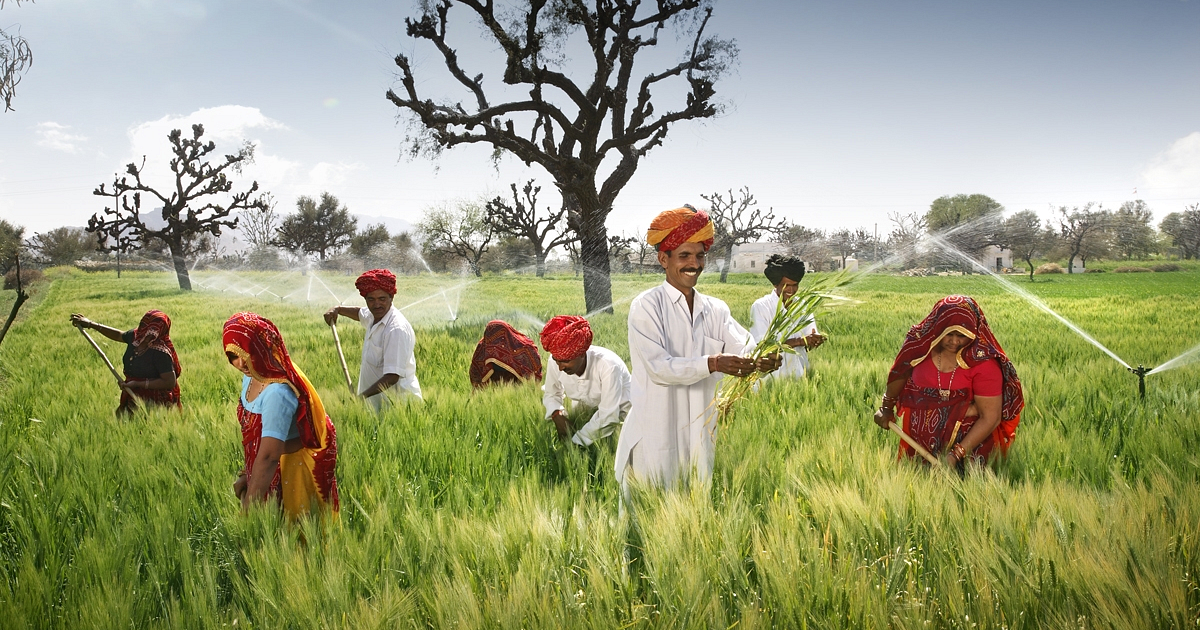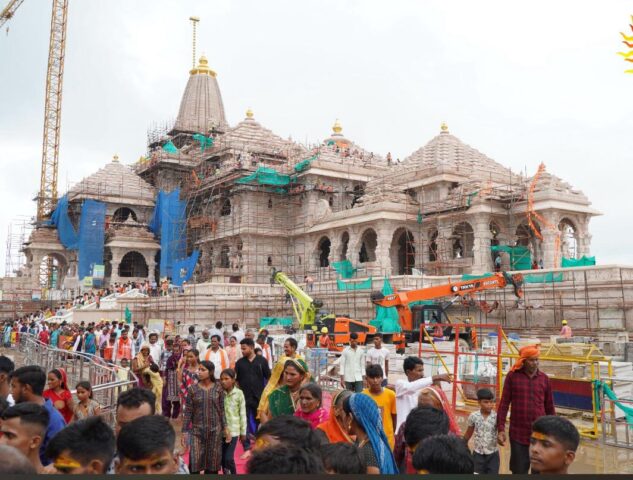Lucknow – The rising levels of heavy metals in soil are posing a serious threat to agriculture. According to a global report, nearly 15% of arable land is contaminated with heavy metals, directly affecting around 1.4 billion people exposed to these areas. The study states that soils in many such regions now contain hazardous levels of arsenic, cadmium, cobalt, chromium, copper, nickel, and lead. As per biologists at the University of York, these metals are entering the food chain through water, air, and crops, threatening the long-term health of humans, animals, and aquatic life.
The Solution: Natural Farming
The sources of these toxic elements in the soil include mining, industrial emissions, unplanned waste disposal, and especially the excessive use of chemical fertilizers and pesticides, particularly phosphate-based ones. The only sustainable solution is organic or natural farming—chemical-free and environmentally friendly agriculture that is resilient to erratic weather, heatwaves, droughts, and waterlogging.
Both the Modi-led central government and the Yogi-led state government are actively promoting natural and organic farming, especially coarse grain cultivation. This approach is considered beneficial for people, land, and water alike.

‘Krishi Sakhis’ to Lead Farmer Awareness Campaigns
Following initiatives along the Bundelkhand and Ganga riverbanks, natural farming is now being promoted along the tributaries of the Ganga as well. The government plans to appoint “Krishi Sakhis” (farm facilitators) on a monthly honorarium of ₹5,000 to spread awareness among farmers. These women will be trained by experts from Krishi Vigyan Kendras (KVKs). Additionally, each district will see the opening of two Bio-Input Resource Centres (BRCs) to support natural farming.
The government aims to connect 2.5 lakh farmers across 282 blocks and 2,144 gram panchayats through this initiative. Farming will be cluster-based, with each cluster covering 50 hectares. Around ₹250 crore will be spent on the plan over the next two years.

Yogi Government to Intensify Natural Farming Mission in Bundelkhand
In Bundelkhand—which includes Jhansi, Lalitpur, Jalaun, Hamirpur, Mahoba, Banda, and Chitrakoot—the Yogi government is running a cow-based Natural Farming Mission. Farmers are being trained to produce their own fertilizers and pesticides using cow dung and cow urine (Jeevamrit, Beejamrit, and Ghana Jeevamrit). The program is ongoing, and ₹13.16 crore has already been released for its first two phases. So far, 470 clusters have been formed, engaging over 21,934 farmers. Each cluster spans 50 hectares per gram panchayat, and farmers cultivating up to two hectares are receiving financial support. Over 2,500 Farmer Field School sessions have been held to date.
Natural Farming to Provide a Lifeline for Stray Cattle
CM Yogi Adityanath is known for his commitment to cow protection. His first term saw strict actions against illegal slaughterhouses and cow smuggling, alongside the creation of thousands of cow shelters (gaushalas). Now, these shelters are being used as model centers to promote natural farming.

12.5 Lakh Cattle Sheltered Across 7,700 Cow Shelters
The state has over 7,700 cow shelters housing 12.5 lakh stray cattle. Under the Mukhyamantri Sahbhagita Yojana, around 1.62 lakh cattle have also been handed over to 1 lakh beneficiaries, each receiving ₹1,500 per month. The government now aims to make these shelters self-sustaining by installing vermicompost units and providing training on processing cow dung and urine. This includes advanced fodder production and preservation, in collaboration with the National Fodder Research Institute in Jhansi.
Support for Cattle Farmers
The government continues to encourage cattle rearing, especially native breeds. The soon-to-be-launched “Nandini Krishak Samriddhi Yojana” will provide 50% subsidy on bank loans to cattle farmers. Additionally, under the “Amrit Dhara Yojana,” farmers can avail of loans up to ₹10 lakh for rearing two to ten cows, with easy terms and no guarantor requirement for loans up to ₹3 lakh.
Budget Allocation of ₹2,000 Crore for Cattle Welfare
The recent state budget allocated ₹2,000 crore for the welfare of stray cattle. The supplementary budget had earlier earmarked ₹1,001 crore for the same. The cost of constructing large-scale cow shelters has been increased to ₹1.60 crore, with approvals granted for 543 such shelters. Under MGNREGA, farmers are also being helped with the construction of cattle sheds and biogas units at subsidized rates.
Making Cow Shelters Self-Reliant and Pillars of Natural Farming
The vision is to make every cow shelter self-sustaining by selling byproducts like dung and urine, and to serve as a foundation for promoting eco-friendly and sustainable farming that’s good for people, land, and water.
Bright Prospects for Natural Farming
Post-COVID, global awareness regarding health has surged, increasing demand for local, naturally grown organic products. This surge has boosted exports and brought prosperity to farmers. The benefits of natural farming are sustainable, tangible, and long-term. These are the driving factors behind the government’s relentless push for natural farming and the protection of stray cattle.
During the recent Mahakumbh, the Ministry of Animal Husbandry and Dairy Development held in-depth discussions on this topic and devised strategic plans moving forward.





